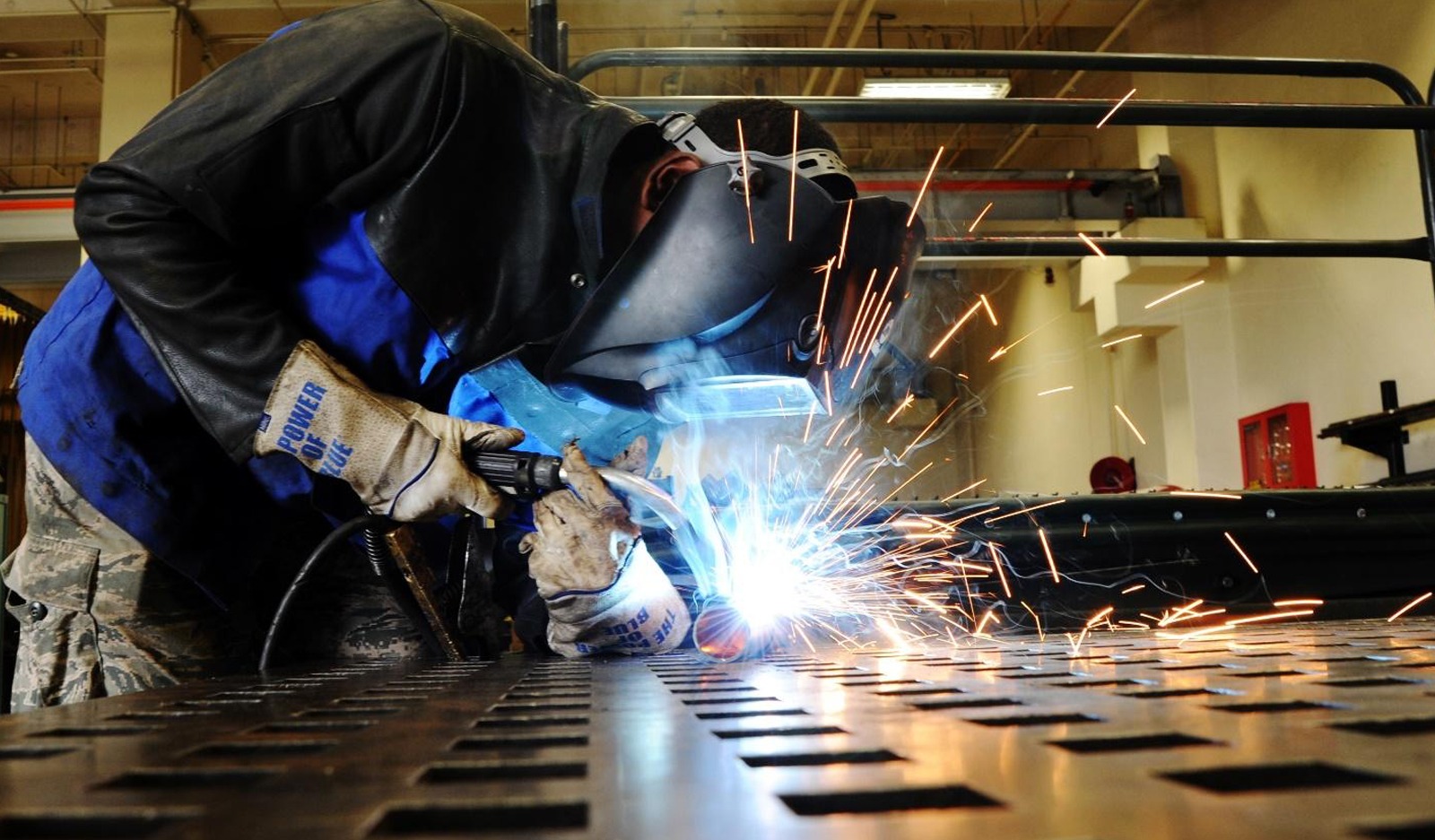Steel fabricators use a variety of tools to turn sections of steel into shapes that are ready to be used for construction purposes. Steel products need to arrive at a construction site ready to be installed accurately, so it is crucial that fabricators work closely with steel detailers and drafters to perfectly bring designs to life.
As well as a good knowledge of steel and an eye for detail, steel fabricators must have the necessary tools for the job in order to cut, bend, weld and mould steel into the pieces needed for the job.

Cranes, Quickies and the Gas Axe, every steel fabricator uses a huge variety of equipment each day to get the job done. Here are some of the most commonly used tools in steel fabrication.
Guillotine
The guillotine is very useful in steel fabrication, maybe even more so than it was during the middle ages. Also known as a ‘cropper’ or ‘punch and sears’ this tool can be either mechanically or hydraulically powered and its main use is to cut through steel plates. The plates are first clamped with a ‘ram’ before being cut with a shear.
Beam Drill Line
Beam Drill lines are complex drills that incorporate computer technology to accurately notch holes in steel beams. These complex drills are a much faster and more accurate solution than other manual techniques.
Gas Axe
A Gas Axe is the slang term for ‘Oxy-Fuel Cutting Torch’, which is a tool that uses fuel gases and oxygen to weld or cut metals. Fuels can vary and can include gasoline, propylene and hydrogen, although acetylene is most common, especially for welding purposes.
Quickie
A quickie is a moving plate-gas machine which uses oxy-fuel to cut steel. The system employs three components, a motorised carriage, a plate track and a torch unit and is very versatile as it can use different types of oxy-fuel for different materials.
Overhead Crane
Cranes are important in steel fabrication for holding materials in place. Overhead cranes use two beam ‘runways’ sitting in parallel and a moving ‘bridge’ covering the length between. A hoist lifts the bridge and transports steel parts over the runways.
Arc Welding
There are various types of arc welders used commonly in steel fabrication. Two common types are:
Stick welding, a process that employs electrical currents to weld steel parts. It is a type of manual ‘arc welding’ and equipment can range from small units purchased at a hardware store to larger industrial pieces.
MIG stands for ‘metal, inert gas’, and differs as it is semi-automatic or automatic and lays an arc between a wire-feeding ‘gun’ to the metal to melt and join pieces. It also employs an inert or semi-inert shielding gas that flows around the wire and shields the site from contamination.
If you’d like to find out more about steel fabrication tools or methods or if you are considering steel for construction purposes and would like a professional opinion, we’re here to help.
Our team of experts have the experience and knowledge to answer any of your questions and will ensure that you find the best solution to suit your needs. To contact us today, simply call, fax, email for information or a steel fabrication quote, or drop by our Brookvale location.